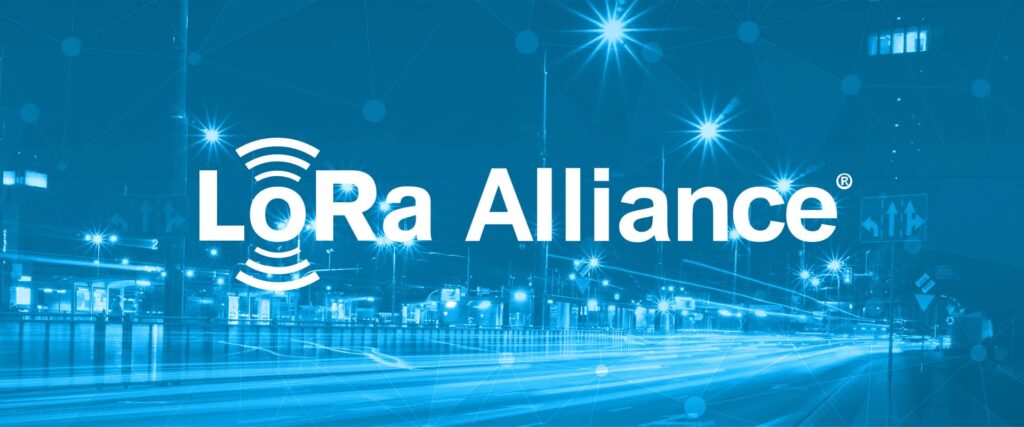
LoRaWAN has revolutionized IoT and emerged as the market leader driving industrial evolution to Industry 5.0 globally. With recent advancements, LoRaWAN has expanded its coverage from the Internet of Things to include Satellite Connectivity, enabling maximum connectivity in hard-to-reach locations while maintaining ease-of-use.
In this Interview, Donna Moore, CEO and chairwoman, LoRa Alliance shares recent standard published for LoRaWAN Satellite Connectivity and how LoRaWAN Technology and deployments are expanding from IoT to Satellite Connectivity & what it has for the Space sector.
LoRaWAN has revolutionized IoT, so what are the striking features of LoRaWAN over other Network Technologies that makes it so popular?
LoRaWAN is the ideal networking technology for internet of things (IoT) applications because it is optimized to send small data packets over long distances while using very little power, which are universal requirements for massive IoT across all vertical markets. All these applications can be achieved with very small data transmissions, which translates to less power use meaning batteries last significantly longer. LoRaWAN can send data over long distances, but also through metal, concrete and underground. Again, this makes it optimal for taking sensor readings in virtually any environment. Some other key advantages that LoRaWAN offers include the most network flexibility (public, private, hybrid, community, satellite) and the most business model flexibility, with both capex and opex financial options available. Finally, LoRaWAN is complementary to many other networking technologies such as Wi-Fi, Bluetooth and 5G, each of which has its unique strengths. This adds to LoRaWAN’s flexibility by allowing end users to leverage the right technology to address their project requirements.
LoRaWAN over Satellites is a recent breakthrough, kindly introduce it to our readers what it is all about.
Satellites using LoRaWAN is a very exciting development in terms of maximizing connectivity in hard-to-reach locations, and ease-of-use. Now, end-users can use a mix of satellite and terrestrial connectivity to achieve 100% connectivity for the end-device regardless of where they are located or when they are on the move.
LoRaWAN deployments are now able to use low earth orbit (LEO) or geostationary orbit (GEO) satellite-based connectivity solutions. LEO satellites communicate with LoRaWAN when the satellite is over the sensors, which does not allow for continuous real time data access. GEO satellites enable constant real-time data access. As with all IoT solutions, it depends on the need of the use case as to the type of satellite connectivity is required. There are two-ways LoRaWAN can leverage satellite connectivity:
Direct-to-satellite. LoRaWAN end-devices on the ground use LoRaWAN to connect directly with the satellites. This gives end-users access to real-time data across borders, providing constant connectivity and direct device-to-satellite communication. They can also communicate bi-directionally, so that commands and data can be sent and received by IoT sensors, even in remote environments. This capability is proving highly useful for tracking moving assets and monitoring infrastructure that crosses country borders, allowing end-users to switch from fixed terrestrial networks to satellites to achieve comprehensive coverage at the lowest cost.
Using satellite connectivity as the backhaul for LoRaWAN gateways. In this case, LoRaWAN devices communicate with LoRaWAN gateways that are on the ground. But because such gateways are in remote places, they use satellite-based backhaul connectivity for the backhaul. Having a backhaul option to send and receive IoT device data leveraging satellite data services provides a highly scalable connectivity option for LoRaWAN deployments in remote locations.
Can you tell us more about recent standard published for LoRaWAN Satellite Connectivity?
Yes, the LoRa Alliance recently expanded the LoRaWAN link-layer standard with the addition of a relay specification in direct response to market needs to provide an essential building block to enable massive IoT. Relay works by providing network coverage extensions through battery-operated devices, which are easy-to-deploy and are a fraction of the cost of adding additional gateways. It can also be used to relay data on satellite connected LoRaWAN devices within proximity. Relay provides a standardized solution that allows for full end-to-end communications in extremely challenging environments where sensor signals could use a boost or redirect to reach either the gateway or end-device. The LoRaWAN TS011-1.0.0 LoRaWAN Relay Specification document describes the relaying mechanism used to transport LoRaWAN frames bi-directionally between an end-device and gateway/network server via a battery-operated node. By enabling relay, the device can transfer LoRaWAN frames between an end-device and network when there is insufficient coverage from the gateway. Relay nodes are battery-powered, can be installed anywhere and do not require electricity or internet connectivity.
Another recent addition to the LoRaWAN standard is TS013-1.0.0, an application programming interface (API) for application payload decoder-encoders (codecs). Adopting the new specification will allow device manufacturers and application server providers to reduce deployment complexity significantly. This will make it far easier and faster to integrate and deploy LoRaWAN devices at a massive scale.
As LoRaWAN coverage is expanding from IoT to Satellite Connectivity, so what are the types of applications it have for the space sector?
Currently, satellite connectivity is enabling terrestrial LoRaWAN applications and deployments, not space-based ones. It is used to provide coverage in remote areas where it is challenging, expensive or simply not possible to deploy terrestrial-based connectivity. Some of the leading applications that benefit from the addition of satellite connectivity to LoRaWAN are asset monitoring and management, and tracking and metering across a wide variety of vertical markets.
Tell us about LoRa Alliance membership program and various certificates they offer to developers?
Representing the largest IoT ecosystem, our members come from around the world and from organizations of all types and sizes. Membership includes multi-national network operators, equipment manufacturers, system integrators, solution providers, sensor manufacturers, cloud providers, semiconductors and research institutions. Among these types of solution providers are several key hyperscalers, including AWS and Microsoft, who are key to driving massive deployments. Our members develop, deploy and use LoRaWAN, driving the implementation of internet of things. LoRa Alliance® memberships allow unlimited participation from member companies’ employees, and available at sponsor, contributor and adopter levels, as well as an institutional option for non-profit universities and government agencies.

In terms of certifications, we offer LoRaWAN Certification for end-devices. Certification allows member companies to gain customer confidence by verifying their LoRaWAN device is conformance tested against the LoRaWAN standard. A LoRaWAN Certified mark indicates that a LoRaWAN device has been tested, de-bugged, and will function on any LoRaWAN network.
We are excited to announce the recent launch of the LoRaWAN Accredited Professional program, which allows individuals to demonstrate and promote their advanced knowledge of the LoRaWAN® standard and its implementation. Accreditation improves companies’ ROI by having knowledgeable individuals who can quickly implement and deploy best-in-class IoT solutions built on the LoRaWAN standard. This program is recommended for individuals with at least two years of professional experience developing and implementing LoRaWAN® and/or have completed LoRa Alliance® endorsed trainings.


















